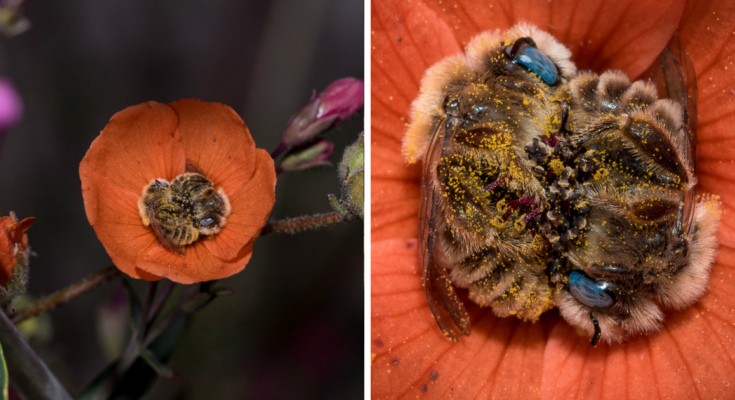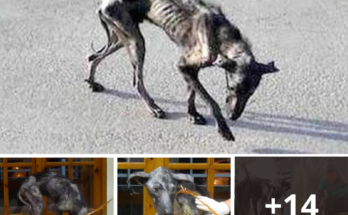[ad_1]
By: Anuradha
Bees play an important role in maintaining the balance of the world. One-third of the foods that we daily consume is a result of pollination and if bees extinct from the world, there is no doubt that humans will also have to face the same destiny. Though they are tiny in size, they contribute a lot for the world and here we found something really cute about them.
Have you heard that there are a bee species that sleep on flowers? Apart from what you have seen in cartoons, you might not have heard such a thing before. But it turns out that there are such a species and the wildlife photographer Joe Neely is the person who witnessed this beautiful sight. He could capture a picture of two bees snuggling in a flower and speaking to us he said,
Image Credit & More info: jmneelyphotography.com | Facebook | Instagram

“The story behind these
photos [begins when] I and my fiancé Nicole went out to find poppy flowers. On
the way back we saw this patch of pink flowers just off the highway so we
stopped to take some photos.”

“Nicole was shooting over this since orange Globe Mallow plant that was hidden inside all of these pink flowers and she heard the bees buzzing about,” the 38-year-old from Phoenix, Arizona, said. “Then she notices that some of the flowers had bees in them but they were not moving.”

“I came over and study it for a while and more bees showed up. Soon, all the vacant flowers were occupied and this one bee was left out. She crawled over to this open flower and got inside with the other one. I was watching as he stumbled around almost drunk-like and then got settled in.”

They wrote on their website that,
“Wel,l I never knew that bees slept in flowers but as it turns out these bees (Diadasia diminuta) sleep in the orange flowers called Globe Mallows.” The Diadasia diminuta – or simply the globe mallow bee – collects pollen from its favorite food plant, globe mallow (Sphaeralcea). According to Forest Service at the United States Department of Agriculture, their nests are commonly found in partially compacted soil along the margins of dirt roads in the western United States. The globe mallow bees play a major role in the flower’s reproduction. “The bees become covered with pollen visiting the flowers [and] most of this pollen is groomed into the pollen basket on the hind legs and taken back to the nest.

“However, some remains on the body and is
deposited on the stigma of each of the next few globe mallow flowers visited.
Thus, Diadasia contributes to globe
mallow reproduction.
Brandon
Hopkins, a bee researcher at Washington State University said that “When it comes to bees sleeping, there
are a few interesting details. They don’t have eyelids, so you can’t just look
for bees with their eyes closed. By carefully watching bees, scientists have
found that honey bees stop moving their antenna and in some cases fall over sideways.”
The nuances of exactly how and where a bee sleeps depend on where it lives. After all, there are more than 20,000 known species of bees living on our planet. Honey bees, for example, work day and night and take shifts sleeping inside the hive. Their sleep patterns change as they grow up. Younger bees sleep less but older bees catch between 30 minutes and an hour and a half each night, taking little naps of about 15 to 30 seconds at a time.

But these two globe mallow bees cuddled together in the flower and made the perfect composition, presenting Joe with what became his winning shot for the day. “I used a Nikon d750 and a 150mm macro lens along with an R1C1 Nikon macro flash,” he revealed. The photographer said he approaches bee photography the same way he approaches any other kind of wildlife photography, from rattlesnakes to bison.

“I
keep a respectable distance and don’t do anything that would change the
subject’s behavior. How macro photography is different is that your depth of
field is very small or shallow because you are very close to something so tiny.
So because of this, I like to shoot with an aperture around f16 to f20, in
order to get as much in focus as possible. This usually means there will be a
need to introduce artificial lighting, like a flash. Now that may sound
annoying but the best part about using a flash is that you don’t have to depend
on a fast shutter speed for sharp images. Instead, you are freezing all
movement(yours and the subjects) with the speed of light.”
So,
let us know what you feel about this!
[ad_2]
Source link



